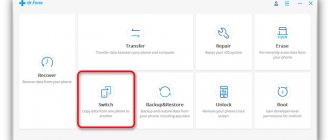Smartphones have long been part of our lives and most users cannot imagine what they would do without such a useful gadget. But at the same time, there are still a huge number of people who are just about to purchase or have recently acquired a similar device. After purchase, the device comes into our hands with factory settings, and many have no idea what parameters can (and sometimes need) to be changed. Some are even ready to ask sales consultants to help them set up the purchased device for a certain fee.
So that an inexperienced user does not once again become disappointed with the purchase due to inconveniently configured parameters and does not have to pay extra money to change them, in today’s article we will tell you what settings need to be changed after purchasing a new Android smartphone. Some tips may also be useful to more experienced owners of devices controlled by a “green robot”.
Test your new device
First of all, take a few minutes to inspect your smartphone and make sure there are no scratches, dents, or chips. Carefully inspect the box and check the specifications.
Most Android phones come with a clip to remove the SIM card tray. Don't throw it away as it may be useful in the future. Inside the box you will find a charger and possibly headphones, a case or a protective glass.
Insert SIM card and enter PIN code
Next, you will be asked to insert a SIM card. Sometimes inserting a SIM card into a smartphone is not as easy as it might seem. Sony mobile devices have a special rivet that must be opened to insert the SIM card.
To open the SIM card slot on Nexus smartphones, you need to use the pin that comes with the smartphone.
Most smartphones have a SIM card slot under the battery, which requires you to open the back cover.
Once you have inserted the SIM card, you will be prompted to enter a PIN.
Get ready for active work
Immediately put your phone on charge. You'll probably be using your new smartphone a lot over the next few hours. It would be a shame if your smartphone suddenly dies in the middle of an important process.
Immediately connect to your home Wi-Fi network if available. Not all mobile operators provide unlimited Internet. And you're almost certainly going to download a lot on your first day, installing apps and games.
Sign in to or create a Google account
When you turn it on for the first time, the smartphone will ask you to go through the initial setup. It's a little different for each smartphone, but they always ask you to sign in to your Google account.
You can skip this step if you want, but we don't recommend it. Logging into your Google account connects your device to many useful services. This is the first step to personalizing your phone.
Activating this account automatically syncs your email, calendar, and contacts list. Moreover, without an account, you will not be able to install applications from the Play Store.
If you previously had an Android smartphone, contacts and mail will automatically be downloaded to your new device as soon as you log in to Google.
Link a bank card, including for NFC
This is not mandatory, but a desirable item for those who plan to actively use their smartphone, buy applications and pay for subscriptions in them, and also use the NFC chip (if available) for contactless payment in stores. If this doesn't apply to you, you can move on to the next step. For others, it’s worth doing this when setting up your smartphone, since to add a bank card you will need to indicate not only its number and expiration date, but also a three-digit code on the back (not everyone remembers it by heart, and the card may not be with you at the right time ).











